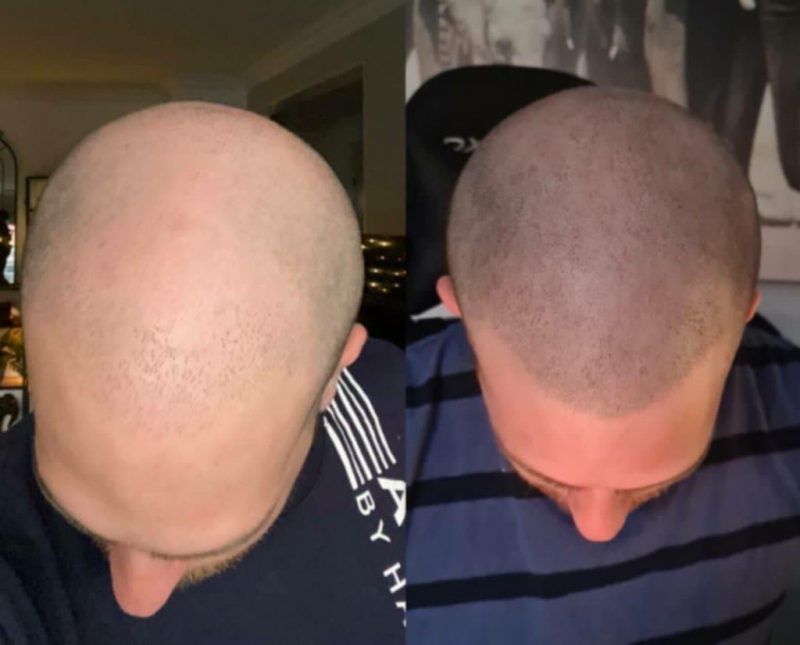Full brows can be achieved using microblading, which you’ve probably heard of. There’s a comparable technique for your scalp, too.
Scalp micropigmentation (SMP) is a technique that produces the appearance of fuller hair. However, what is the difference between the two?
“Both microblading and micropigmentation north Carolina are subclasses of micropigmentation, but they are fundamentally distinct ways of implanting pigment,” says Los Angeles-based makeup artist and SMP practitioner Michal Cohen.
Micropigmentation is done using an electric tattoo machine, while microblading is done manually. This is because scalp skin is thicker than eyebrow skin, and hence requires more force to penetrate.
1. How does SMP work, and who can benefit from it?
As opposed to microblading eyebrows, SMP uses small, layered dots of various black colors to produce the impression of a shadow on your scalp. Natural-looking depth and definition may be achieved with this technique known as pointillism.
It is the job of a professional practitioner to ensure that the dots mimic the appearance of a real hair follicle and blend in with your skin tone perfectly.
People who suffer from any kind of hair loss may benefit from this method of hair restoration. For example, someone with: cancer, alopecia, thinning hair, male and female pattern baldness
2. Does it hurt? What’s the process like?
Your scalp will be numbed with a topical anesthetic before the SMP treatment. Keep in mind that some soreness may still be present. It all depends on how much suffering you’re willing to put up with.
Avoid getting SMP during a breakout or flare-up of scalp acne or other skin sensitivities such as psoriasis since it will be difficult to apply pigment to the irritated regions. SMP may not be a suitable option if you have a history of keloids, which are more frequent in darker skin.
A first session is likely to occur once you’ve done your homework and sought out a competent and talented SMP artist (more on how to accomplish this below). In this appointment, your practitioner will give you an overview of the procedure and advise you on what to expect.
The following are some general guidelines, for example:
Taking a shower before each session is recommended. For four days after each treatment, you will not be allowed to wash or damp your head (this includes heavy perspiration).
Four to five hours is the average length of time required for each procedure?
Depending on how much of your scalp is affected by SMP, you will require a different number of treatments. SMP is a process of layering color, so even for a tiny region like a widow’s peak; Cohen believes three to four treatments are necessary for long-term preservation.
Scheduled treatments will be spaced out across a few weeks.
Don’t go swimming, use steam or sauna facilities, or take excessively hot showers that might generate a steam storm in the weeks between treatments.
Keep your head covered from the sun for at least the first four days (wearing a hat is fine). The treated skin may be exposed to the sun for an hour, or 45 minutes if you have extremely fair skin, on the fifth day following treatment.
It’s important to keep in mind, however, that less exposure to the treated region equals greater long-term results.
3. After your final treatment, it’s essential to:
28 days following your last treatment, avoid all swimming, sauna, and steam room use.
After treatment, stay out of the sun for 28 days. Use sunscreen with an SPF of 30 to 50.
Take it easy for five days following your last treatment.
After the fourth day after your last treatment, begin consistently moisturizing the treated region (this is also true between treatments).
How much does it cost, and how long does it last?
Scalp Micropigmentation (SMP) costs more or less depending on the size of your scalp. It costs between $400 to $1,000 for a single treatment, according to Cohen.
A semi-permanent micropigmentation procedure may be used. Since all skin naturally exfoliates, the treated area will eventually disappear.
The color may fade, but only if the wrong pigment is employed, not if it becomes lighter.
However, if you have really dry skin, the fading process is likely to be faster. Dry skin’s tendency to peel might unintentionally accelerate the exfoliation of pigment.
4. Are there any risks involved in this process?
With every medical process, there is a chance of complications. SMP is no exception.
Services like SMP and other permanent cosmetics, which are not legally called tattoos (tattoo ink enters far deeper into the skin with a much larger needle), entail the same hazards as tattoos.
A source you can rely on. Allergies to certain color components and illnesses caused by tattoo ink are two examples of this.
However, the most essential thing to keep in mind is that there is no professional training necessary to become an SMP artist. (the same goes for microblading). You need to conduct your due diligence while looking for a trustworthy practitioner because of this.
5. How to find the right SMP practitioner for you
A thorough background check is essential before choosing an SMP practitioner. The service will be conducted at a certain location.
6. High-quality SMP treatment centers should have:
Training body art practitioner license certification is on the show (depending on state requirements)
Health department certification of bloodborne pathogens. The sterilized environment with a sink where the needles may be opened in front of the patient for barrier protection (nitrile gloves, mask, barrier tape, and guards on SMP treatment device)
SMP regulation and licensing policies differ from state to state. Licensed and regulated tattooing, branding, body piercing and permanent makeup (SMP) practitioners in California are all subject to the same licensing and regulatory rules and procedures. A licensed tattoo artist may easily transition to SMP with little to no training.
Since tattoo ink and pigment are not usually controlled by the FDA, consumers need to be aware of the hazards associated with getting tattoos or applying permanent cosmetics before making a choice, according to the FDA.
SMP specialist Zang Miah of Zang SMP educated Cohen, and he warns the outcomes might be terrible if done by a novice practitioner.











